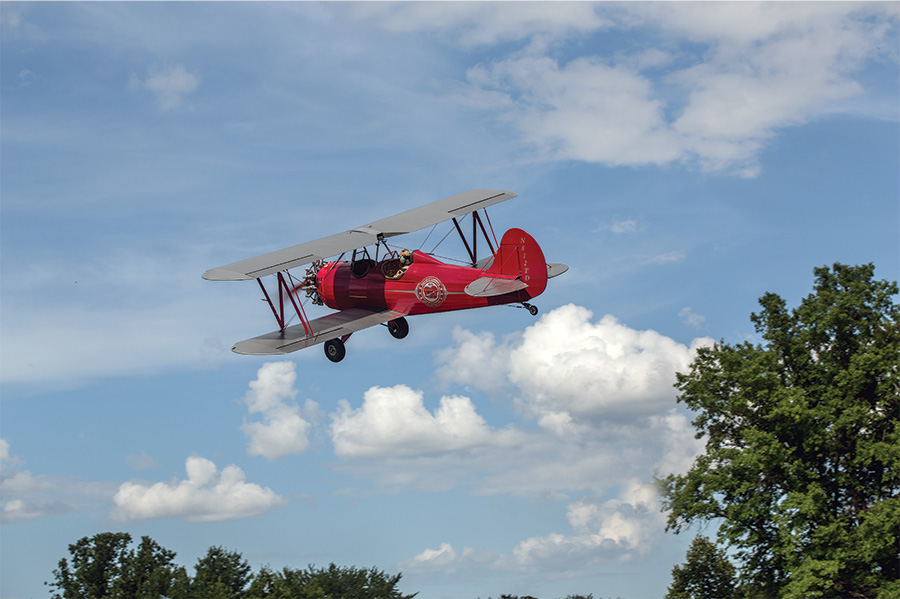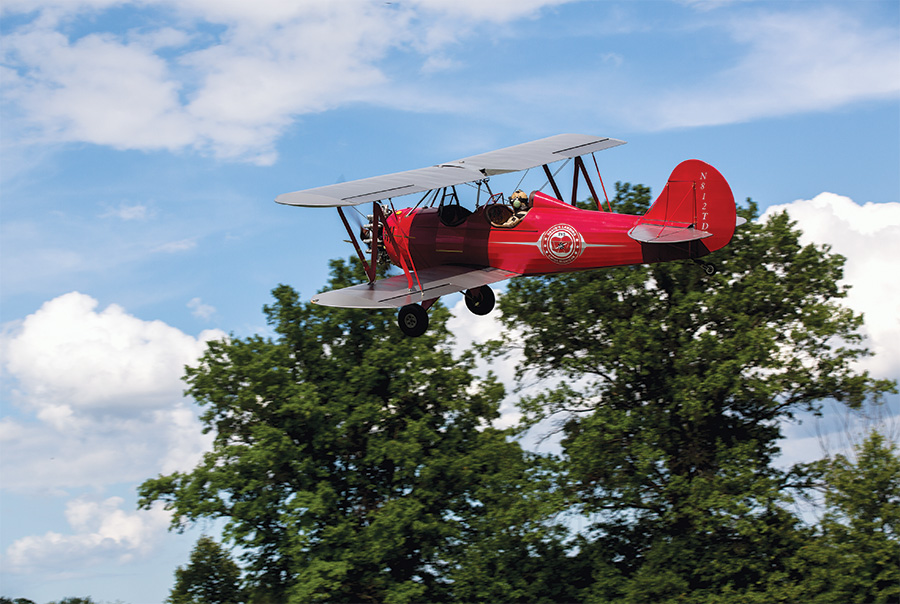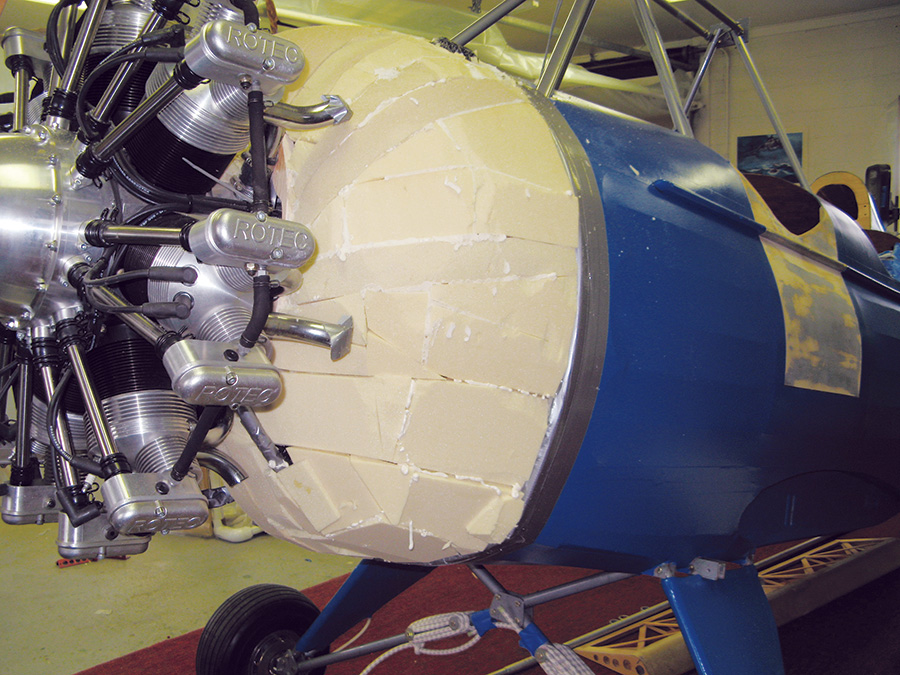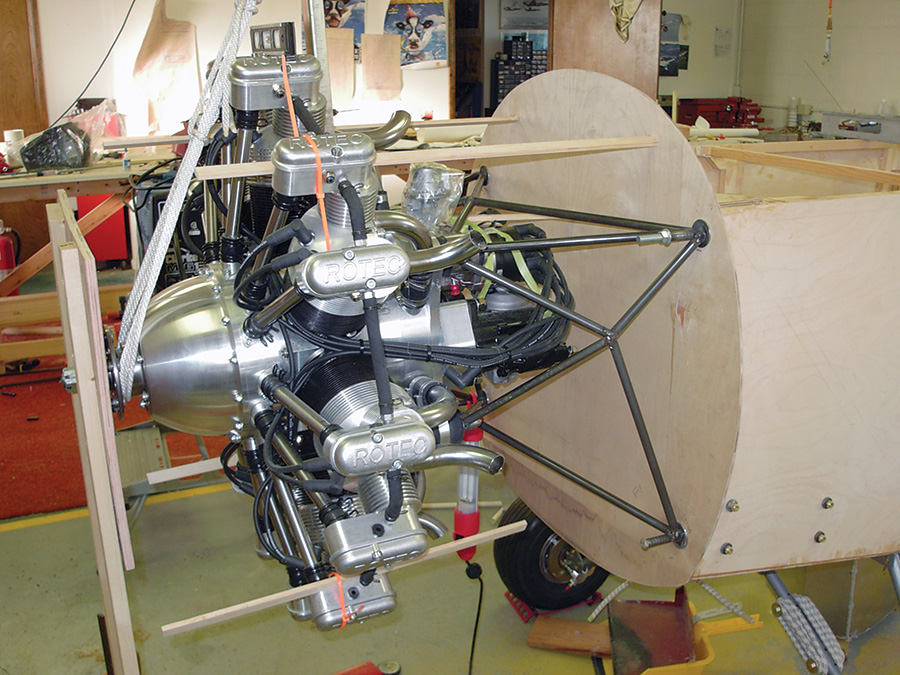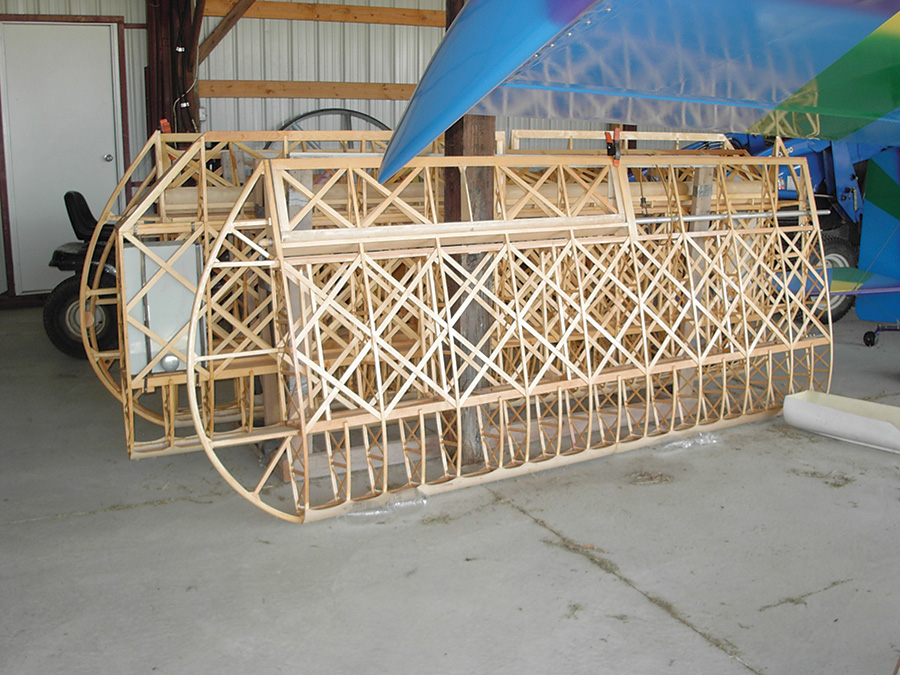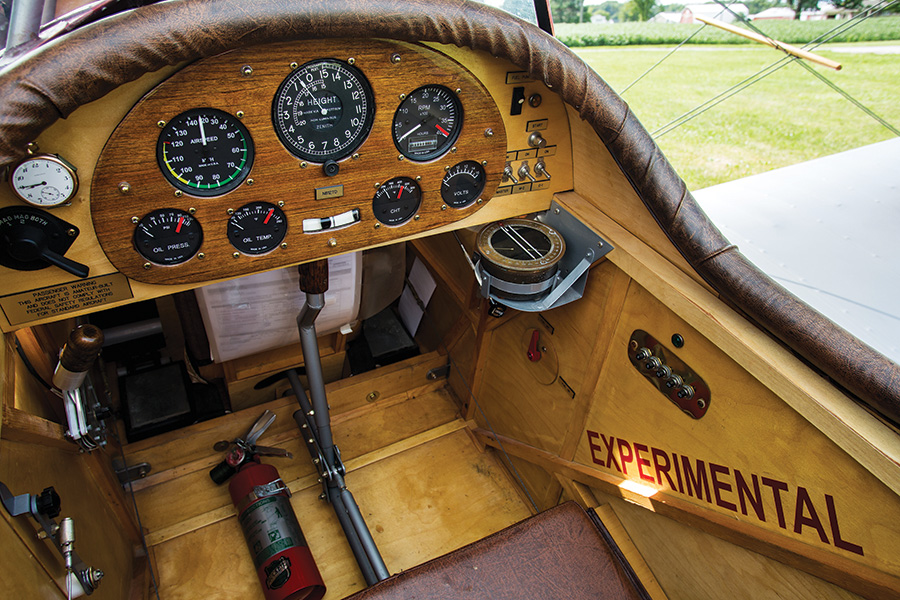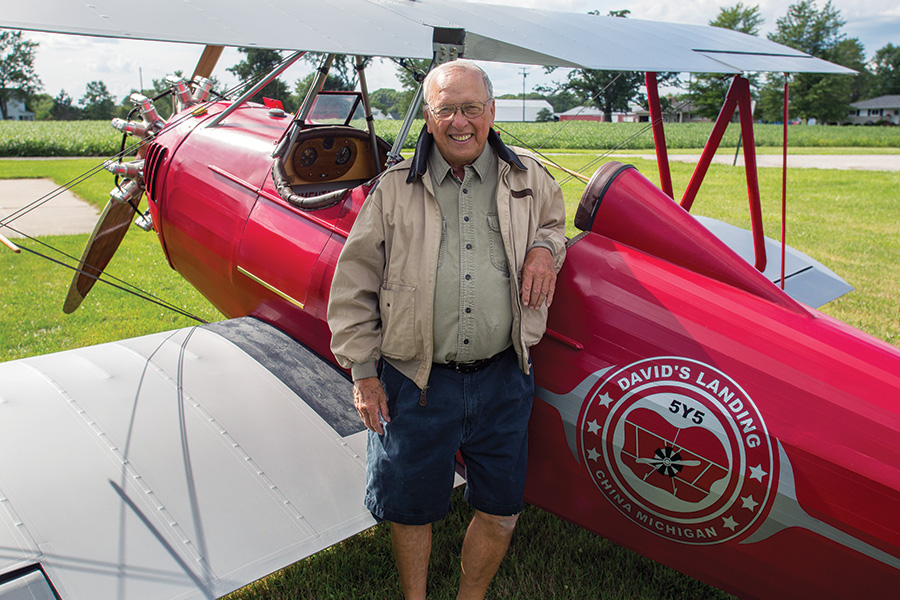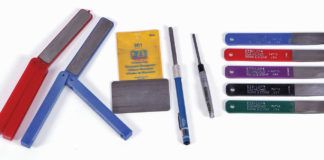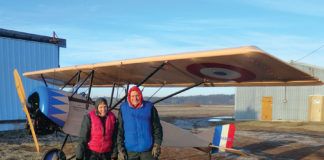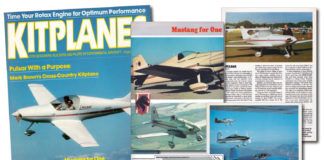Since he can’t remember when, David Shirey has been enamored with airplanes. An effusive and enthusiastic aviator, he pursues eclectic aeronautical interests. At EAA AirVenture 2004, he saw the Rotec R2800, a seven-cylinder, 110-horsepower radial from Australia. “It was the most beautiful little engine I’ve ever seen,” said Shirey. After thinking about it for a year, “I bought one in 2005…and then had to figure out what kind of airplane I wanted to build to make it look good.”
Romantic Quest
Round engines have always evoked aviation’s golden era, but “I didn’t want to go through the expense or trouble of a big one, like the 300-horse Lycoming on my friend’s N3N-3,” he said. Already possessing several airplanes (and an airport, David’s Landing [5Y5] in St. Clair, Michigan, 50 miles north-northeast of Detroit), getting an airplane like the World War II Naval Aircraft Factory biplane trainer was “a bit much for me.”
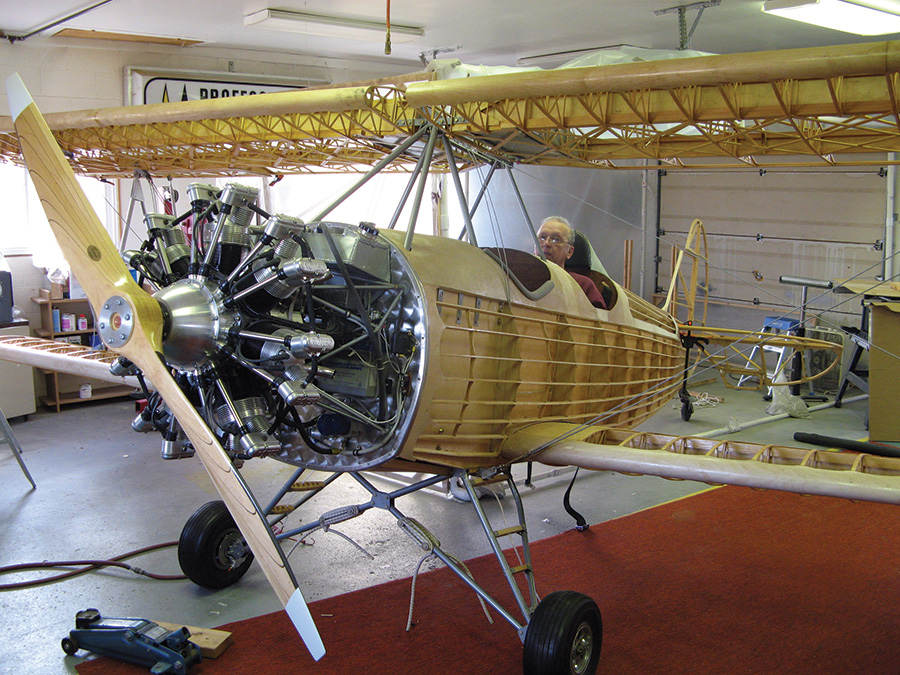
Shirey added stringers and formers to change the Celebrity’s shape. He replaced the galvanized firewall with stainless steel and turned it with Scotch-Brite in a hand drill.
No, it must be something he could build—and maintain—himself. In the 1980s Shirey turned raw materials into a KR-2, and in the 1990s he built a Mini-Max, which shares the hangar with the last Varga Kachina (a 180-hp taildragger) ever built. The KR-2 succumbed to in-flight engine failure after the home-brewed overhaul of its VW-based powerplant, and “I haven’t flown the Mini-Max recently because it is hand-propped,” he said, explaining that he recently traded his bad shoulders for artificial joints.
Contemplating suitable airframes to display the Rotec radial, it had to be made of wood, said Shirey, “because I suck at metal.” The Warner Sportsman, a do-it-yourself Ryan PT-22, was an early contender, but it didn’t work out for reasons unexplained. “I’d always wanted a biplane, so I started looking for wood kits, and the Fisher Celebrity just sort of fit.”
Before ordering the kit, Shirey confirmed the compatibility of the engine and airframe. Calling the North Dakota company that then owned the design, he asked about the Rotec, explaining that the geared radial engine weighed 220 pounds with carb, starter, and alternator and produced 110 horsepower. “They said it would work; that’s no different than an O-200.”
Building Back in Time
A materials kit, the Celebrity is born from a box full of wood and metal, perfectly suited for a matchmaking builder who wanted an airplane that looked like it belonged to the radial. Shirey changed the shape of the firewall and fuselage, rounding it all out by adding formers and stringers to the slab-sided structure. In changing the shape, he had to discard some of the kit’s premade parts, including the plywood that goes over the turtledeck, which has all the scallops cut in it.
The nose and tail are defining features on any airplane, and the changes successfully turned the kit into a generic biplane from the 1930s that mystifies onlookers. Even Celebrity aficionados stand at fly-ins, chins in hand, eyebrows drawn over eyes focused on the trim red biplane, and wonder, “What is that?”
A rounded rudder connects to an unmodified vertical stab; fairing the intersection with its horizontal counterpart is a strip of rivet-studded Mylar held in place by Velcro. For the cowling, Shirey hot-glued urethane foam behind the engine and carved the resulting shape. He covered the mold with drywall compound, using quarter-round pieces of wood trim to create the louvers, and went to work. “I’m sick of fiberglass,” he said.
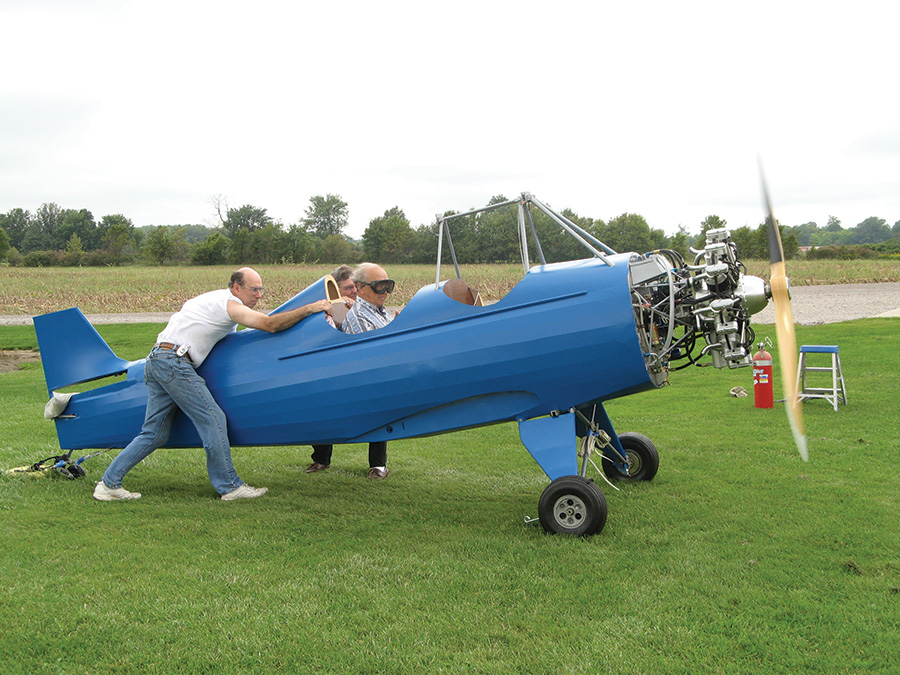
With the tail tied down and Bob Hunt and Bob Walters providing starboard and port side assistance, Shirey throttles up the Rotec.
The kit called for a galvanized firewall, but Shirey used stainless. Behind it is Fiberfrax. Everything is built to standard practices. He decorated the firewall with a Scotch-Brite disk in a hand drill. In place of the aluminum originals, longer steel landing legs provided the needed prop clearance. To streamline the square-tube N-struts, Shirey went old school, eschewing foam and fiberglass. “I got some 2×4 balsa, carved it to shape, glued it on the aluminum, and wrapped it in fabric.” To create the classic three-pane windshield, “I made a phony frame out of .050-inch aluminum and riveted on the patches.”
Overall, the “Celebrity was just a woodworking job; at first I was afraid of the geodetic wing construction, but it was pretty easy,” Shirey said. “I used T-88 and built two ribs a day, one before going to work and another after work.” Each upper wing panel holds a 2.5-gallon tank that feeds the 13-gallon main tank in the fuselage.
Like most radials, the Rotec employs an airframe-mounted oil tank. Shirey built a tank to fit the shape, but “I didn’t know how to do the math, so I filled it with rice to measure its capacity.” It holds 8 quarts, 6.5 quarts for oil and room for “foaming when it comes back from the engine,” he said. “Rotec recommends motorcycle oil because of the big planetary gearing up front. Right now, I’m using Amsoil.”
Shirey wrapped the airframe in PolyFiber and PolyTone. “It looks like dope, but it isn’t.” Little touches complete the transformation, cord-wrapped wingtip handholds, a “flying circus” logo he designed, and cockpit appointments. A friend gave him the old British horizontal compass. “It took forever to find the [working] pocket watch on the panel. The ignition switch is real, but it’s not connected because it doesn’t work with electronic ignition.” With that ignition sending sparks to seven cylinders and the tachometer, Shirey had to special order his UMA rpm-counter.
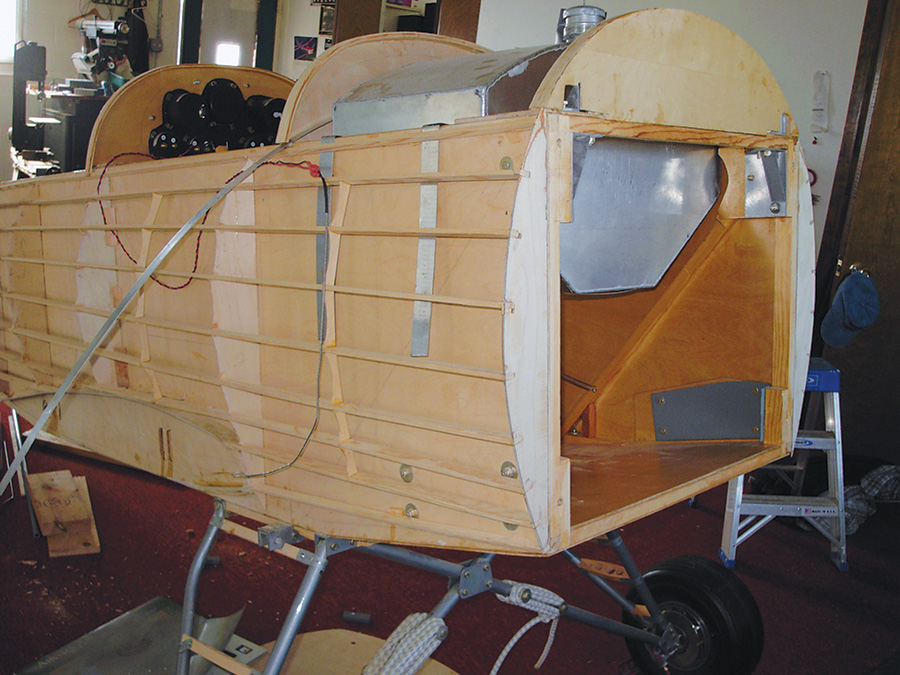
Formers and stringers rounded out the Celebrity’s slab sides which support the 13-gallon main fuel tank.
The Gem on the Firewall
Hanging the engine wasn’t a problem. Rotec provided guidance and the machined metal and rubber mounting donuts. “I had to provide the steel and get it welded up,” said Shirey. Before mounting his radial, Shirey returned it to its birthplace to address problems identified by other early production engines already flying. “They covered it under warranty,” he said, but it “cost me $2,500 for freight there and back.”
Like any round engine, the Rotec leaks oil. On its initial runs, Shirey said everything was covered in oil in five minutes. Thinking that a bit much, he asked a friend with a lot of engine experience to check it out. The torque wrench revealed that the valve covers and a few other fasteners were out of spec. “She still leaks oil, but not a lot.”

Shirey designed his own “flying circus” logo for David’s Landing, which is located in Michigan’s China Township.
When earthbound for more than 30 minutes, Shirey opens petcocks that shortcut the oil’s gravity flow to the lower cylinders, where hydrolock lives. Under each petcock hangs an antique Hills Brothers coffee can. While searching antique stores for these drip catchers, Shirey found a 1930s coal oil can that looks like the one the kid in The Great Waldo Pepper carried to town. When he’s out and about, like Oshkosh and other fly-ins, “I put it under the plane, a silly little diorama for display.”
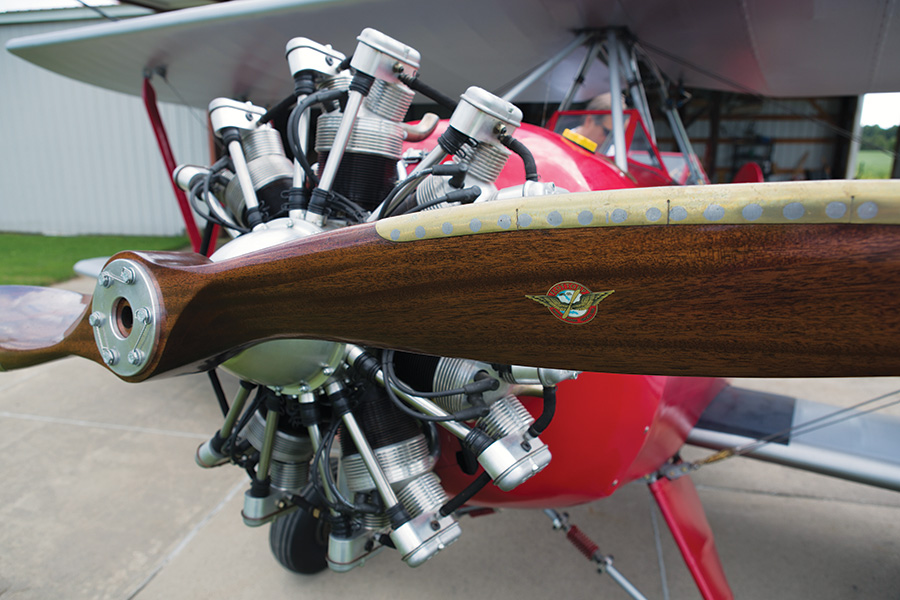
Bob Hunt CNC carved the new mahogany prop that added 10 mph to cruise without sacrificing takeoff or climb performance.
At every step, friends aided and abetted the project, from welding and wiring to working the weight and balance numbers to make sure everything was where it needed to be. Too numerous to name, they stopped by Shirey’s shop often. “It took five and half years to build,” he said. “It would have been four, but I lost about a year and half when [his wife] Tina died. I just couldn’t get back into it.” But eventually, he did, and he takes some solace that his wife of 40 years saw the biplane’s registration, N-812TD, which honors the August 12 wedding of Tina and David.
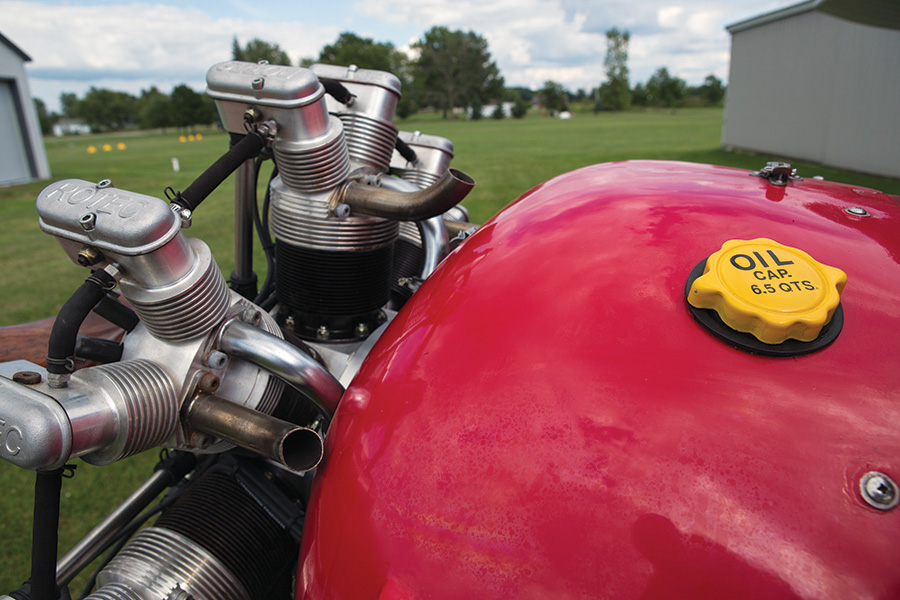
An 8-quart tank holds 6.5 quarts of oil. Shirey opted for the Rotec with short stacks because he likes the sound, and one day he wants to fly at night to see the dance of the blue exhaust flames.
Flying the Past into the Future
Leaving plenty of runway to spare, the Rotec R2800 lifted the biplane above David’s Landing for the first time in October 2009. “The controls are light and well-harmonized,” said Shirey. “It’s just a toy to fly on nice evenings.” By late 2012 he’d logged a bit more than 100 hours, all on auto fuel. “I stay local, 100, 150 miles, unless I’m going to Oshkosh,” a three-day trip he made in 2010 and 2011. Cruising at 85 mph, going places, like around Lake Michigan, takes time. Originally the Celebrity wore an Aymar-DeMuth prop, which did okay on takeoff and climb but only 75 mph in cruise. Bob Hunt, a local prop maker who, Shirey said, is resurrecting the Flottorp brand, CNC’ed a new one from mahogany. It preserved the climb performance and increased cruise by 10 mph.

A close look reveals fabric-wrapped, balsa-streamlined N struts and a pitot tube made out of a .50 caliber round.
Dominating his bright, well organized shop is Shirey’s current obsession, a bright yellow RotorWay Exec. In late 2012, he was finishing the engine baffling and heat shielding and predicted two months more work to install the fuel and electrical systems. “RotorWay makes a nice kit, with all the parts vacuum packed and I thought, ‘This is going to be easy—bolt it together, and go.’ Wrong! It’s 10 times harder than an airplane because the alignment of everything has to be 1-tenth of 1 degree,” he said.
The source of his rotary-wing passion eludes him. “I’ve parachuted out of them, bought my kids rides in them, but I never thought about flying them until about two years ago when I got the bug.” Training in a Phoenix-based Schweitzer, Shirey earned his helicopter rating in November 2011, and in May 2012 he took the 6-hour transition course to the RotorWay, he said, his enthusiasm bubbling. Shirey is already looking at his next obsession, a single-seat turbine-powered Helicycle. “It looks like an absolute ball, and I can’t wait to pull up and say, ‘Fill’er up with Jet A.'”

